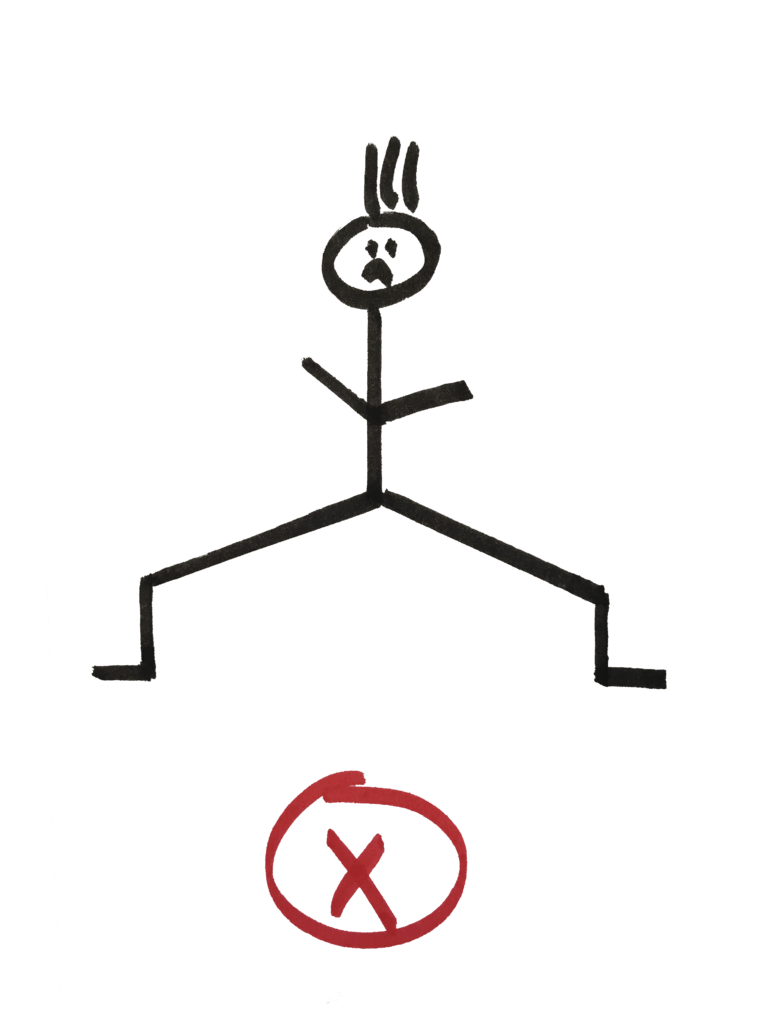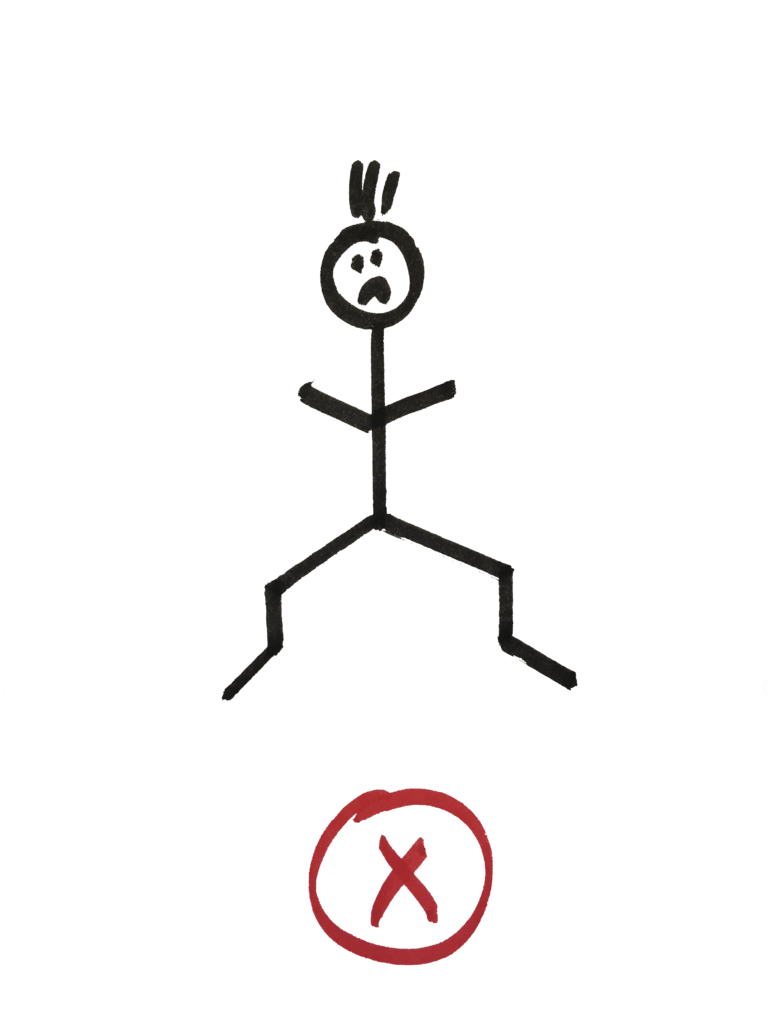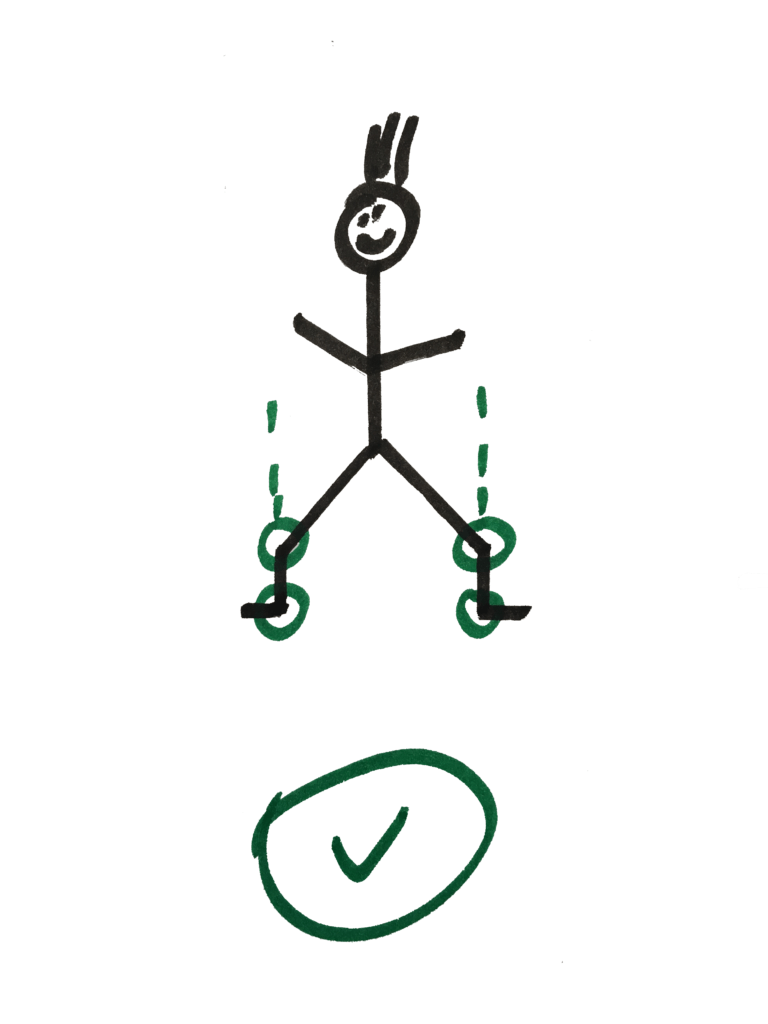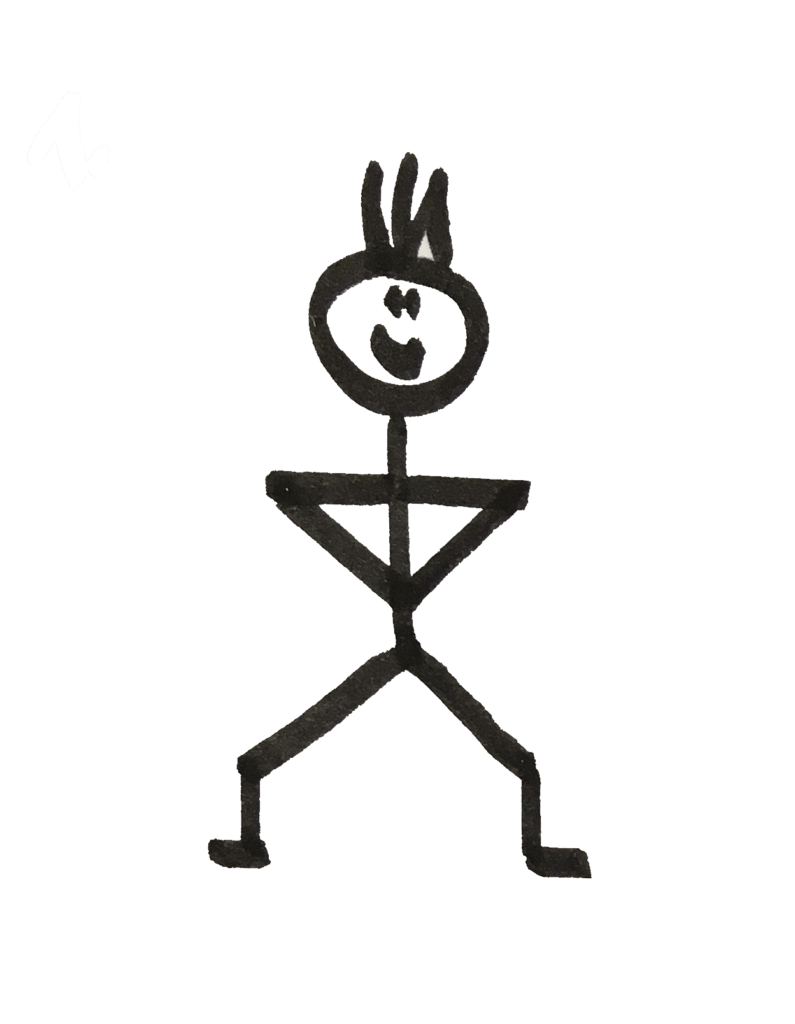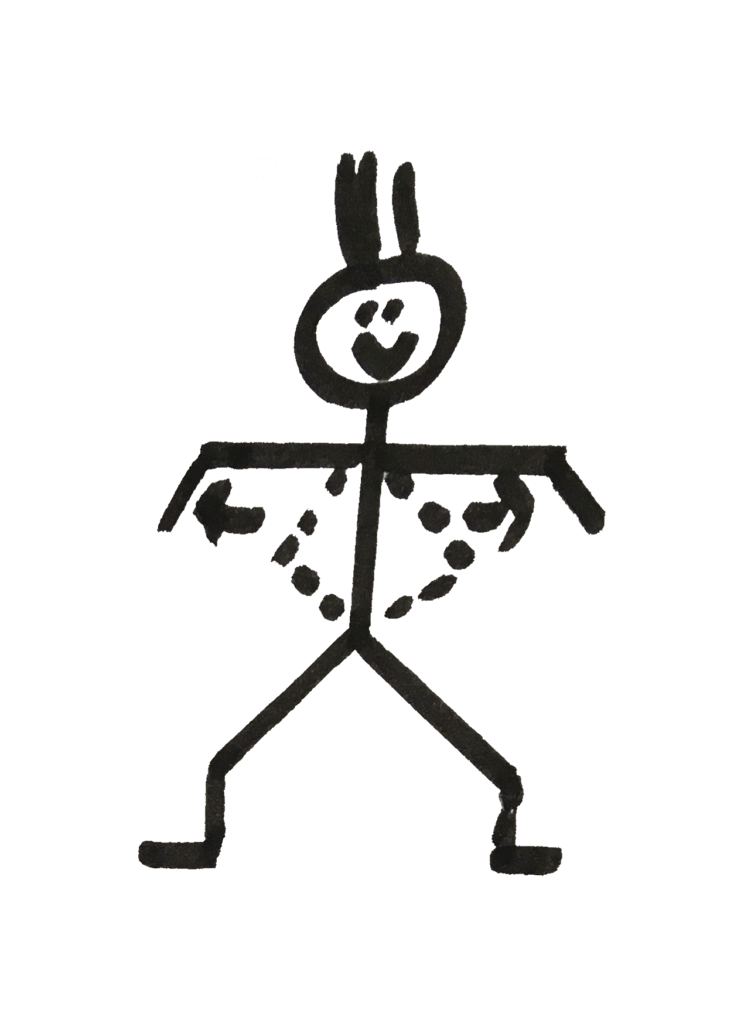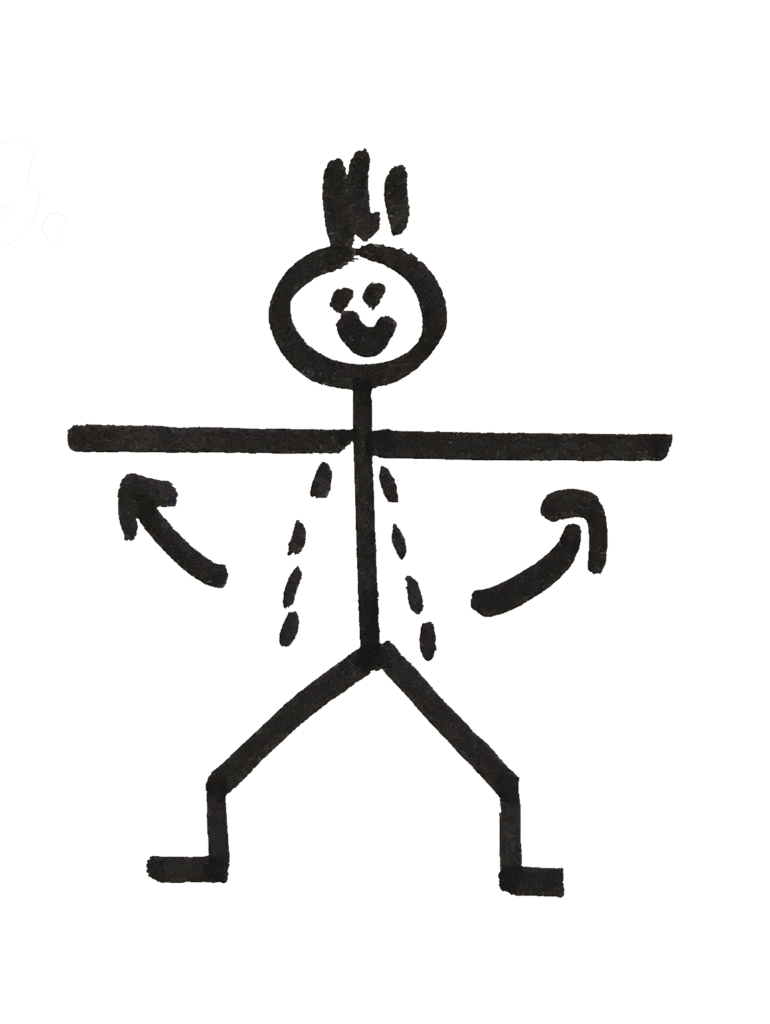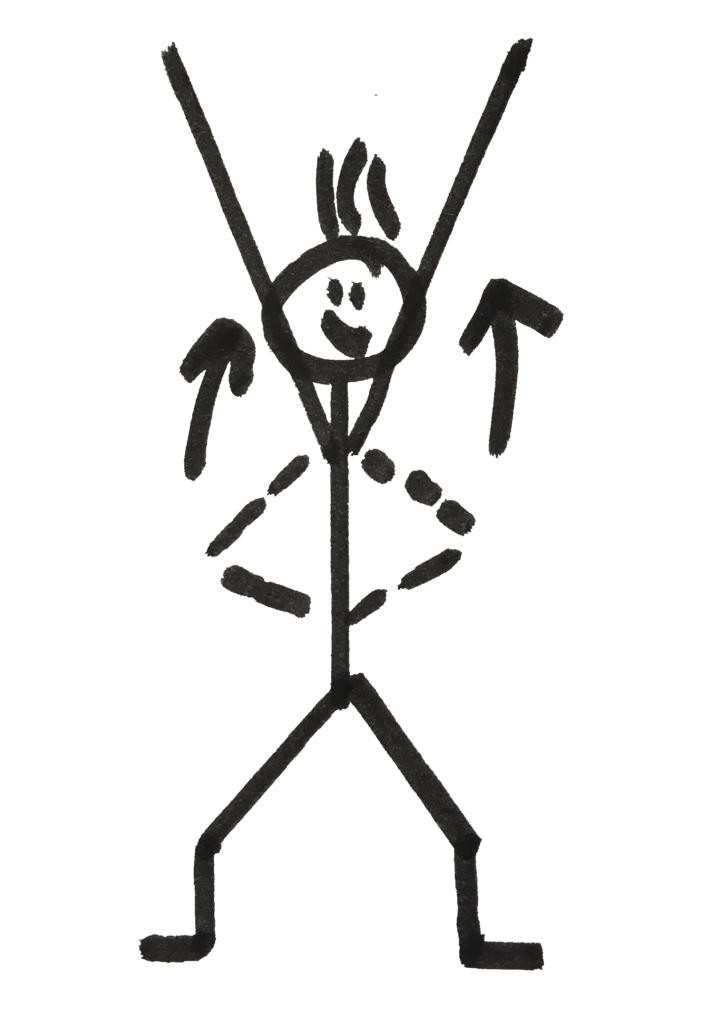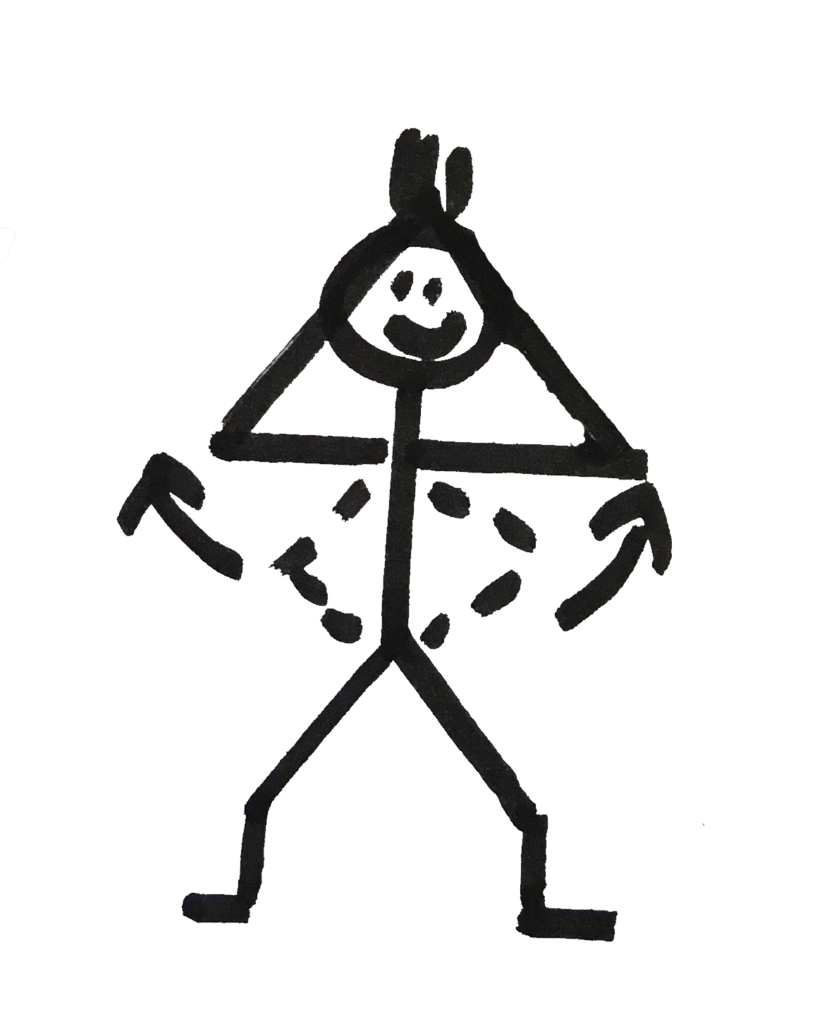In every Bodyattack release, without exception, we come across the jumping jack (mostly several times).
Jumping…?
The jumping jack is, to put it simply, a combination of small squats (bending and stretching your knees) and raising and lowering your arms – but at a pretty fast pace. That’s why in German we also call it the “fidget“. 🙂
But the jumping jack isn’t just cardio training.
As always in Bodyattack, your core should be activated by tightening the abdomen, and despite the fast and demanding movement, the posture should remain upright: chest proud, shoulders down. Imagine that a thread attached to the highest point of your head is pulled straight up – this will automatically stretch you into an upright posture. By always maintaining this great posture during the execution, the jumping jack becomes more demanding, more intense and the deep core muscles are trained as well. The booty is not neglected, either, because it works with every jump, if the jack is executed properly.
Depending on the track, there are different variations for the arms, so that you can decide each time anew how far you want to raise your pulse, depending on your mood and the shape of the day. Apart from the variant without jump, the legwork, on the other hand, remains unchanged and is the most important thing in the jumping jack. If executed correctly, the jack becomes a great strength exercise for the legs.
Clearly, the focus is on the technique of your legwork!
There are three typical mistakes here:
- You jump too far apart with your feet.
The jumping jack is not a sumo squat (a squat variant with extra wide legs)! It is quite sufficient to jump a bit further than hip width, especially as a beginner.
A jump that is too wide is often the cause of the other two errors: - You jump out of your forefoot and keep your heel in the air. This shifts the load away from the thighs (where desired) to the calves, thus making the jumping jack ineffective and creating an overload on the calves. Possible consequences: severe muscle soreness in the calves, cramps, but also strains of the calves or even a torn muscle fibre. It is also difficult to bend the knees and push the hips backwards in this foot position – so the squat gets lost.
It is therefore important to land from the jump over the heel and put the whole foot on the ground.
The wrong jump technique can also be a possible starting point for the third mistake: - The knees bend inwards (as with X-legs). This causes the knees to be heavily overloaded (especially in the outer knee joint cartilages) and may result in pain and in the worst case permanent knee problems!
As in the squat, the knees must always remain above the middle of the foot. This is achieved by avoiding the first two mistakes, that is, coming to the ground over the heel and not jumping too far apart with the feet, because the further apart the feet are, the deeper you have to go to keep your knees outside – this is almost impossible with fast jacks. Thirdly, when bending the knees, you should press them outwards simultaneously, just like with a normal squat (activating the booty and the outer thigh muscles).
By the way, it helps to jump slightly forwards when you open your feet – i.e. jump into the squat – and back again when you close them. This makes it easier to land on the heel, push the hip back and keep the knees outside.
The exact sequence of movements – step by step:
You start in an upright position. The arms are either stretched or bent depending on the chosen variant (I will come to this further down), in this latter case the hands or fists are placed on the hips. Tense your abs, push the top of your head towards the ceiling, chest out, shoulders deep.
Now you jump slightly forward and apart with your feet (a little more than hip width is enough), bend your knees (consciously pushing them outwards), move your hips backwards (as if they wanted to remain at the exact spot where they were before). You land with the whole foot on the ground – heel down!
If you now press a pause button, your final position (apart from the arms) is nothing but a small squat: The knees are bent and above the middle of the foot, the hips are pushed back and your whole weight is on the heels. The back is long and the chest proud.
Then it goes back to the upright position: Push off with your whole foot and jump up and back (so that your feet get under your hips again), stretch your knees and finally bring your feet together. The arms may also come down again, back to their starting position.
Speaking of the arms…
The basic rule is: arms up or apart when feet apart, arms down or together when feet together. Got it? 😉
You cannot really do anything wrong with the arm technique – in the worst case, you might do the movement sloppily, thus reducing the effect of the training.
But as I have already hinted, it is indeed the armwork which decides about the cardio-intensity of your jumping jack – and this is quite cool, isn’t it?
- Jack without arms: Recommended for beginners and to first master the correct legwork.
By omitting the arms, you can completely concentrate on the technique for the legwork and on your posture. The heart rate in this case is approximately 20%-30% lower than in the jack with arms. - Warm-up: The arms are bent in a right angle and the fists meet in front of your belly button. Now lift your arms sideways to shoulder height (maximum), without alternating the angle in your ellbows. The fists remain in a line straight in front of the ellbows. This easy and smooth movement is particularly adapted for warming up your shoulders and your back.
- Aerobic arms to shoulder height: In the Bodyattack aerobic moves (especially in tracks 3 and 8) the arms and hands are always really stretched. It has to look graceful. 😉 In the “low” version, the stretched arms are lifted to the sides until maximum shoulder height and then brought down again until the hands cross in front of the belly button. The heart rate rises in comparison with the variant without arms, but it should remain in the aerobic zone.
- Aerobic arms overhead: Any arm movement which ends above your head makes the exercise much more challenging, the pulse definitely rises. The back and shoulder muscles have to work much more, as the arms have to cover a longer distance in the same time and a thus very fast movement has to be controlled. Stretch your arms in a “V” overhead (the hands are stretched, as well) when the feet jump wide and take the hands back to your hips again when the feet close.
- Power jacks – the athletic version: The arms are crossed right above and in front of your forehead in a particularly powerful way. Now, not only your shoulders and back have to work more, but you also activate your biceps and chest muscles. The hands are clenched to fists here – it all has to show great strength and power! When closing the feet, your fists return to your hips.
As you can see, the jumping jack not only is a great cardiovascular workout, but it can, according to the version you chose, be boosted up into the red zone. Furthermore, it is a functional exercise which involves the whole body – you train your legs, booty, abs, back, shoulders, arms and eventually your chest muscles. You become fitter, more stable, stronger, faster.
This is why none of you will be surprised now if I say that in my opinion, jumping jacks should be part of every FIBER training routine. 😀
Then subscribe to our blog updates via the sidebar (in the mobile version via the + sign). If you also want to be able to comment on our posts, just register here.


